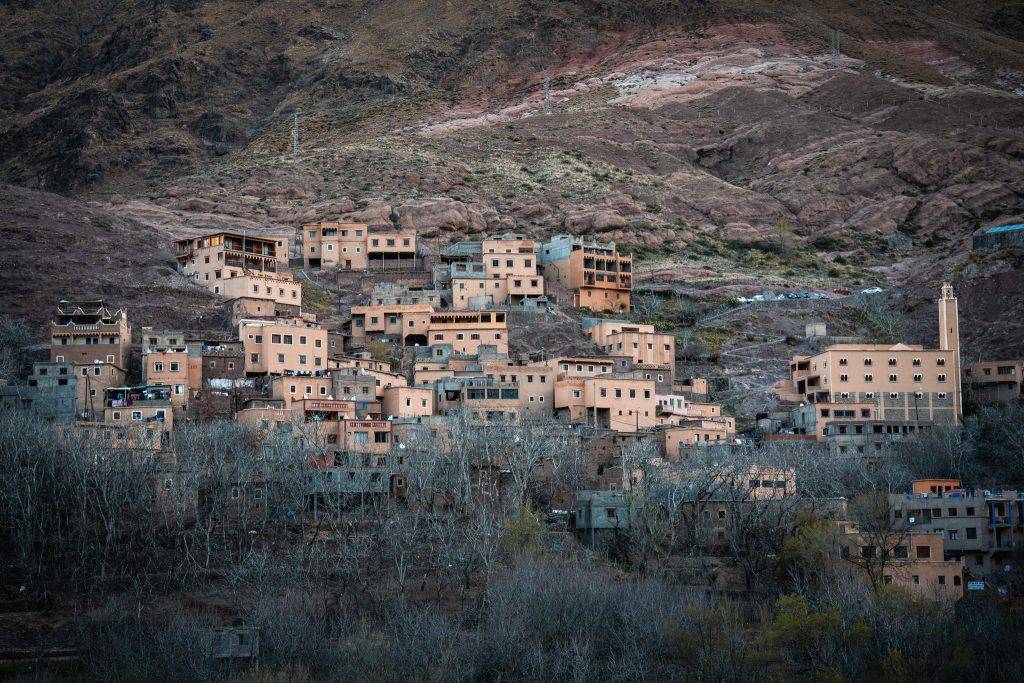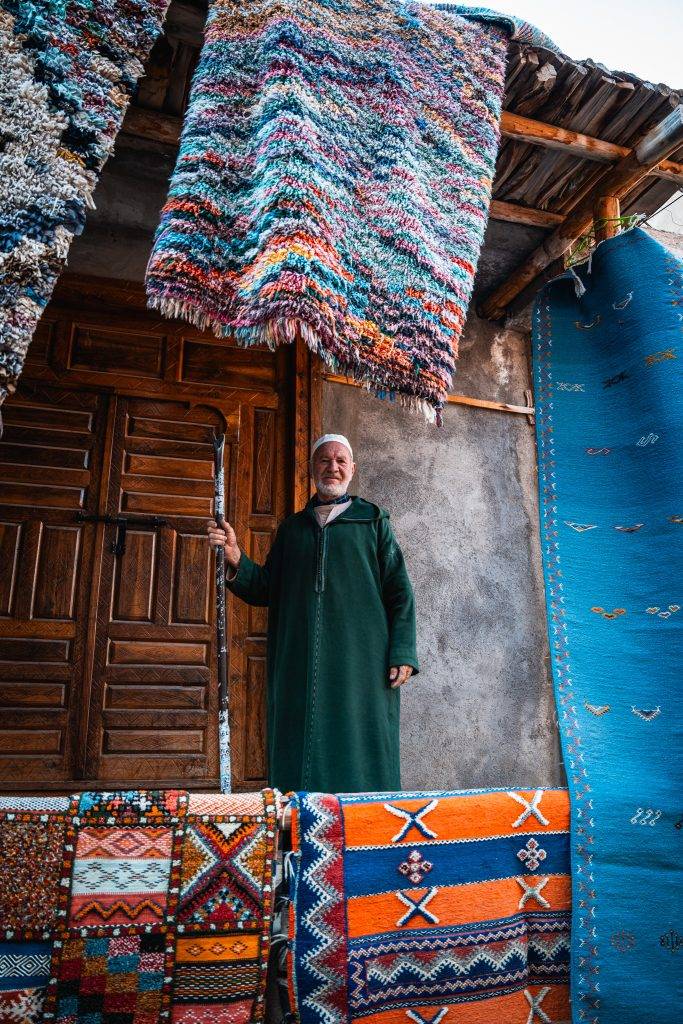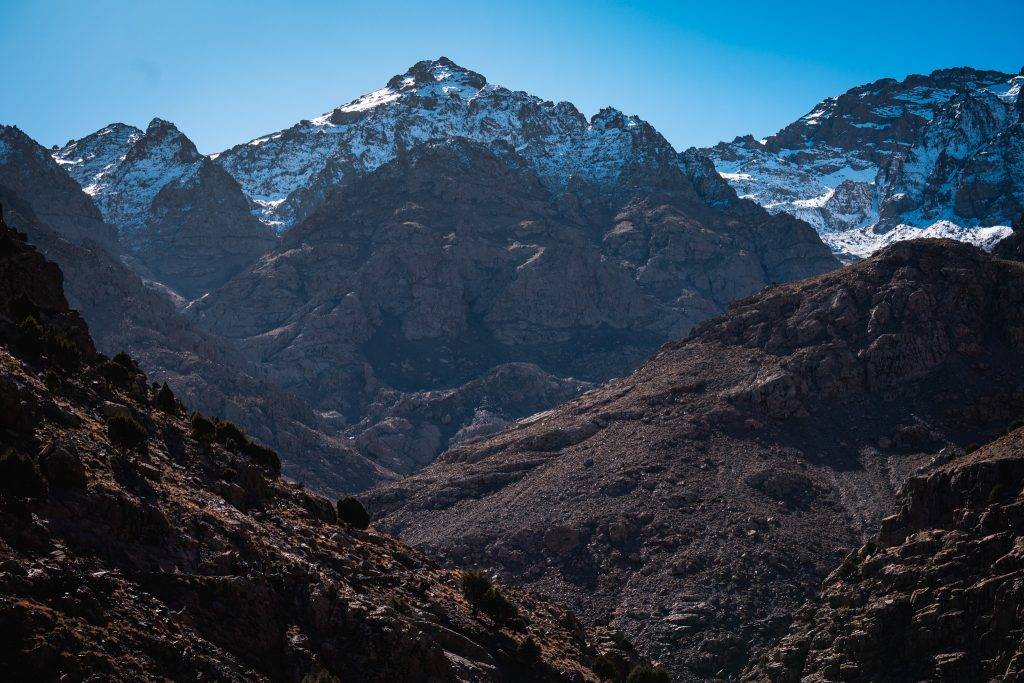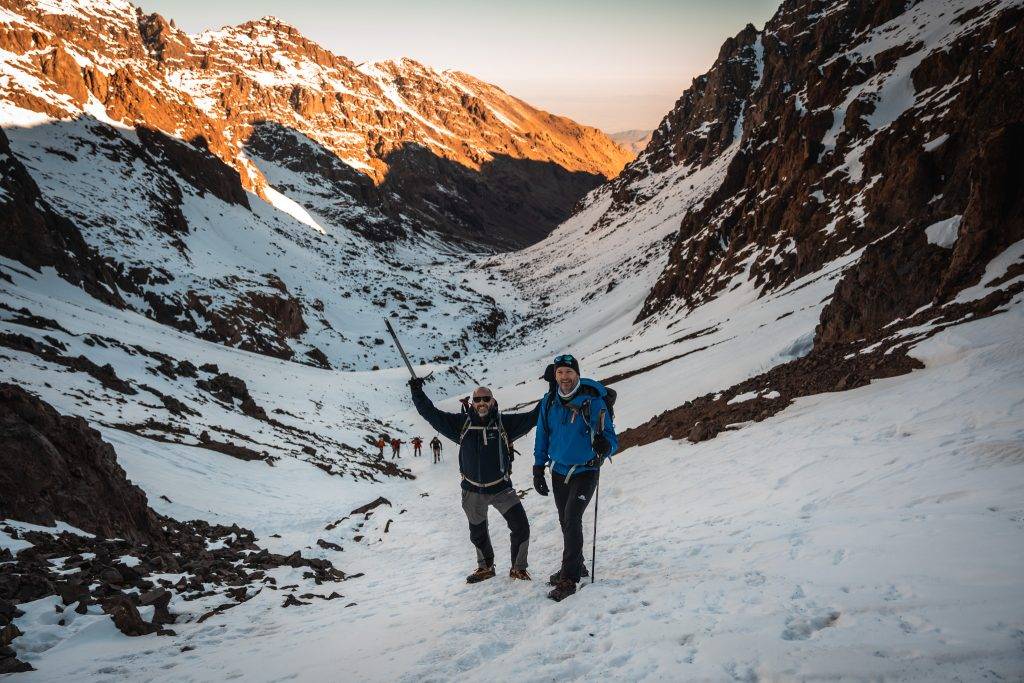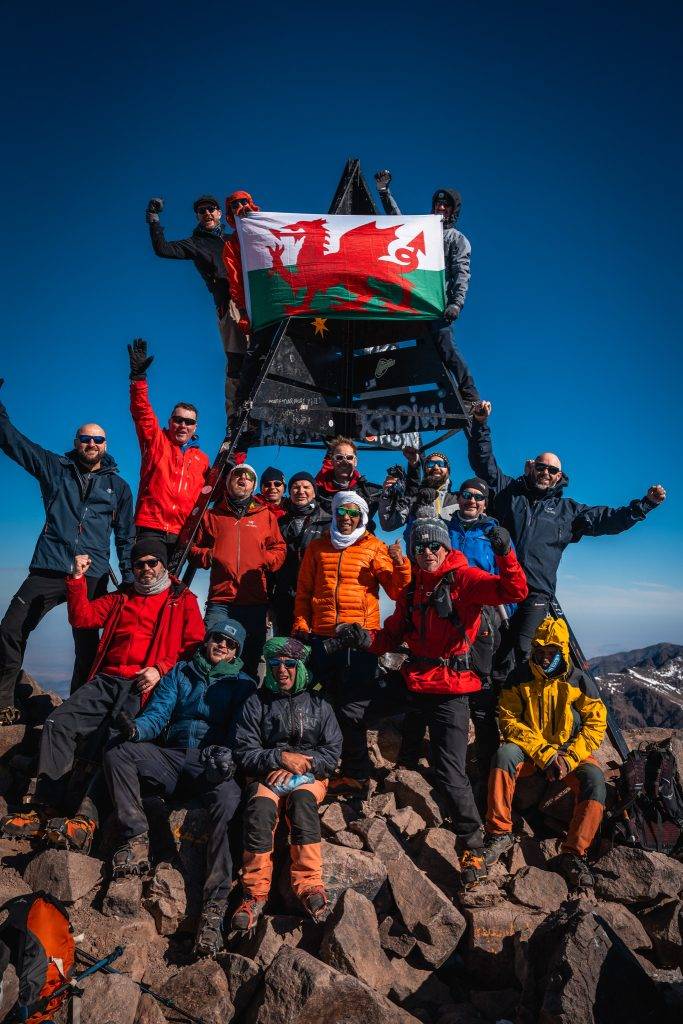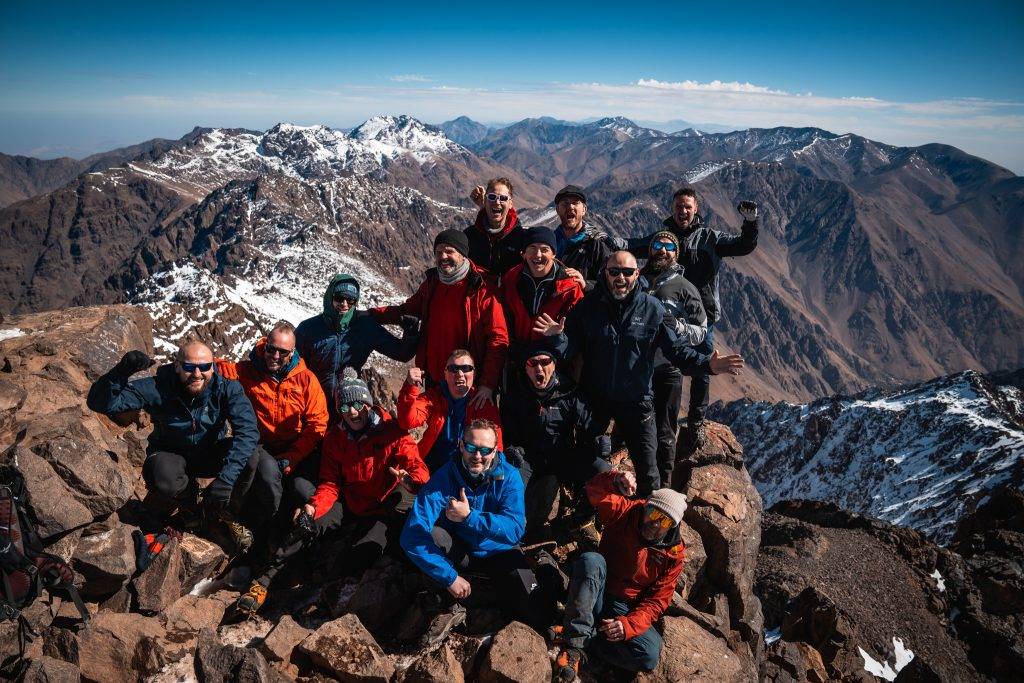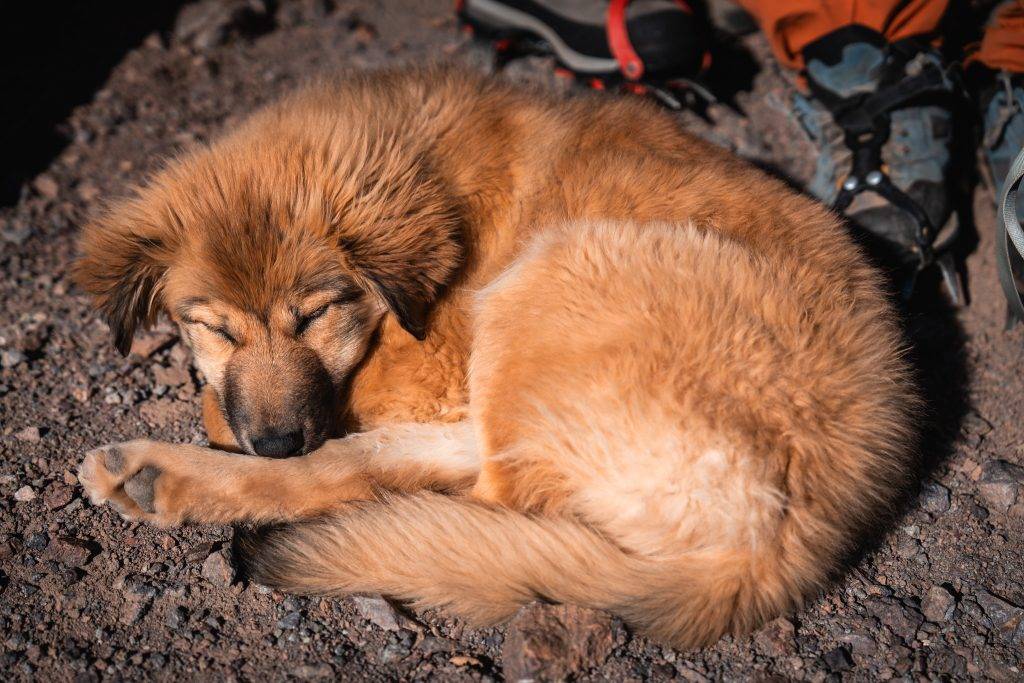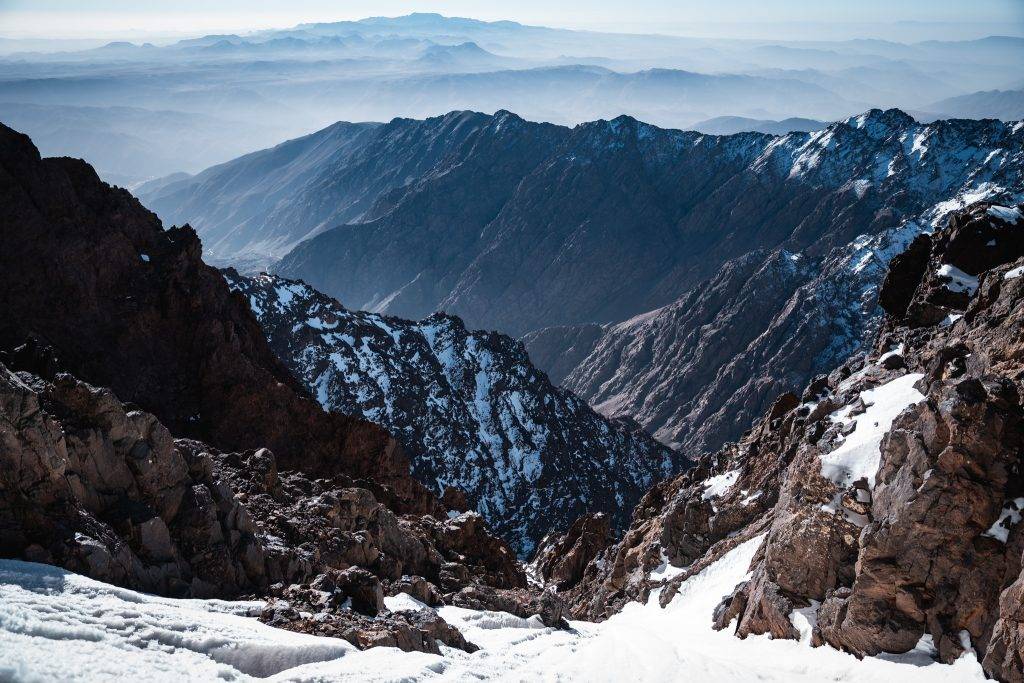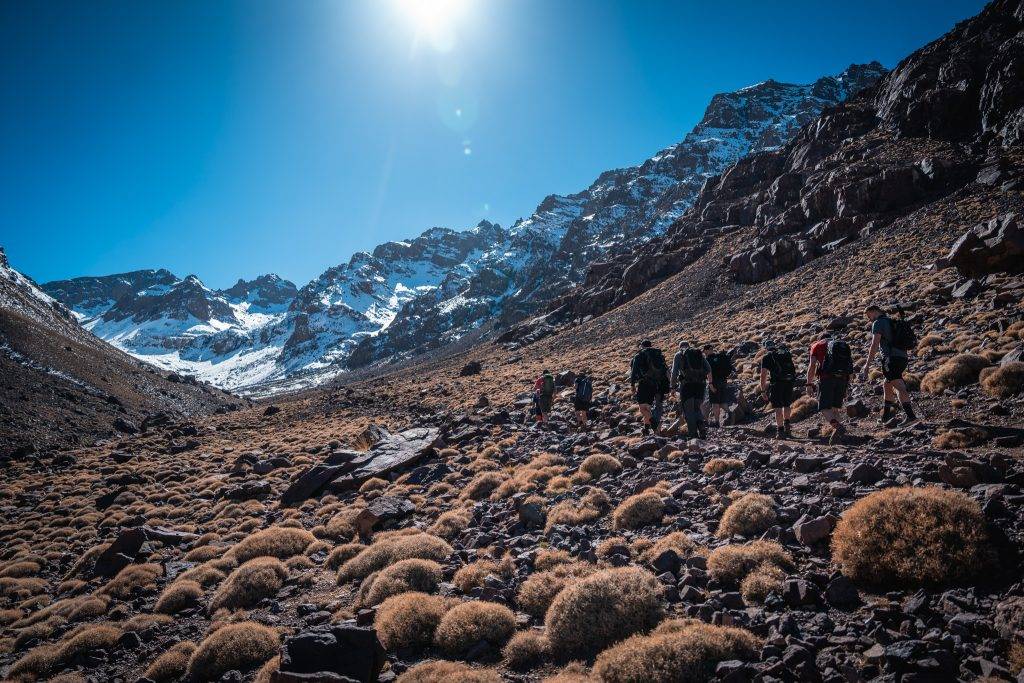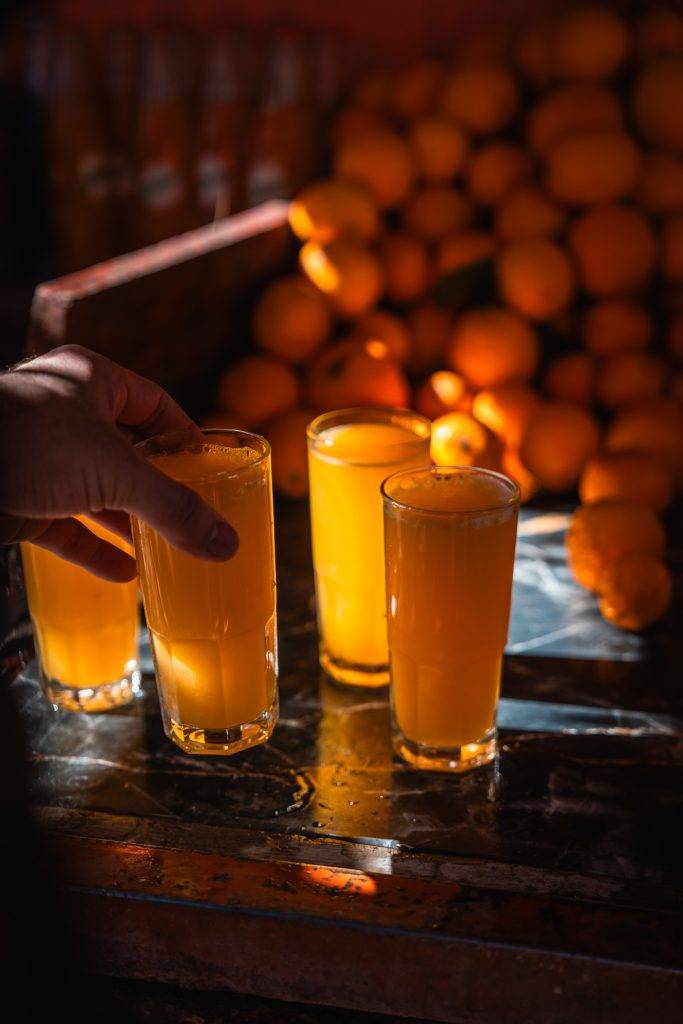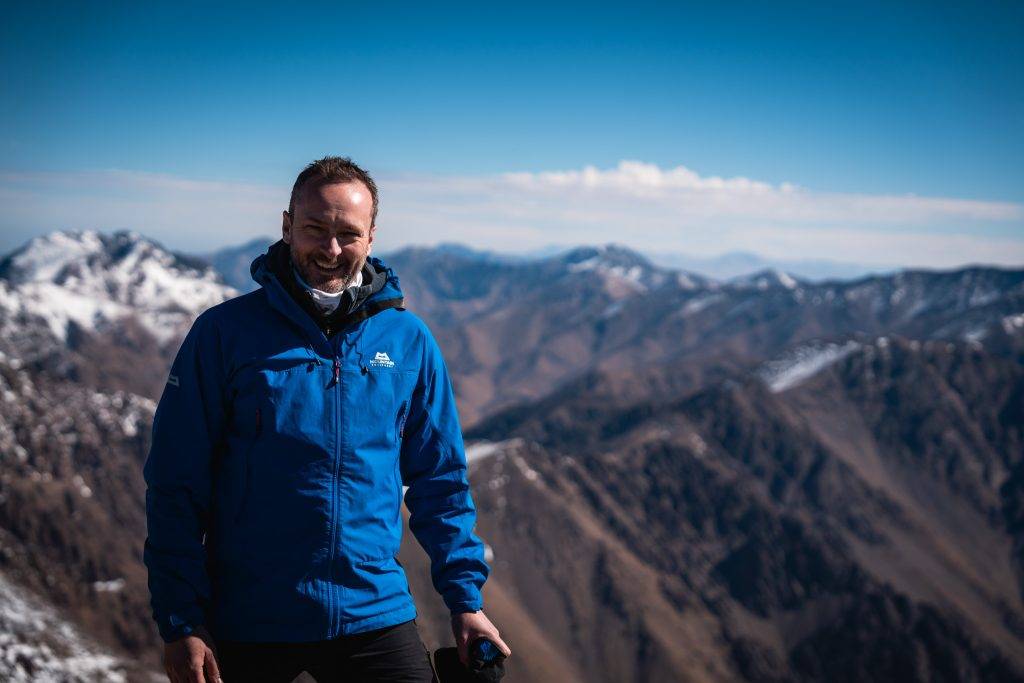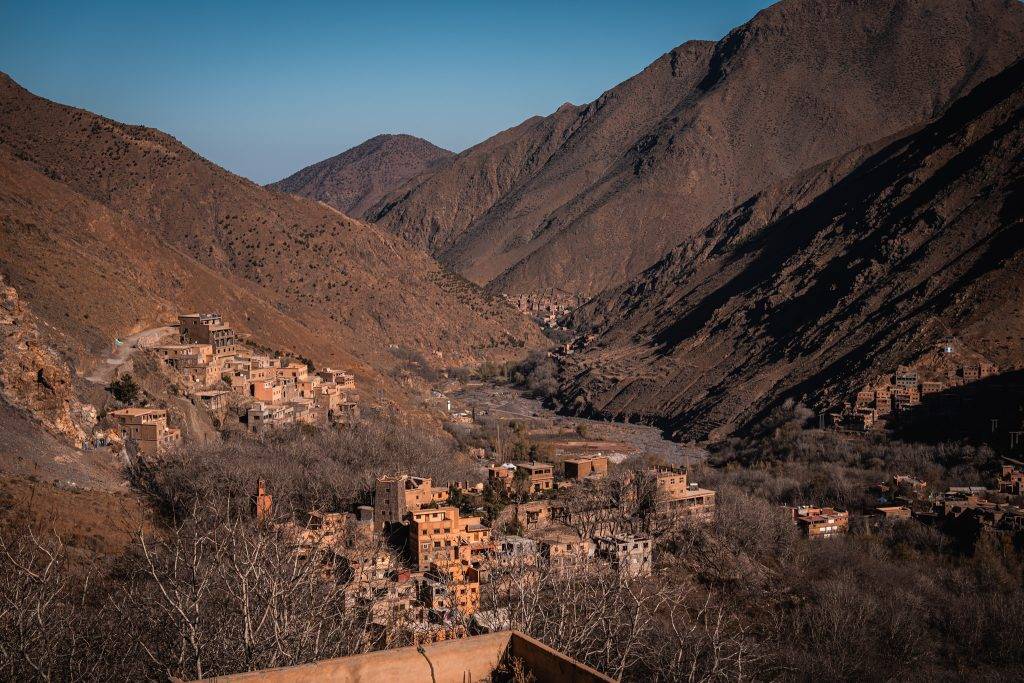A week has gone by since we basked in the sun at the summit of Mount Toubkal.
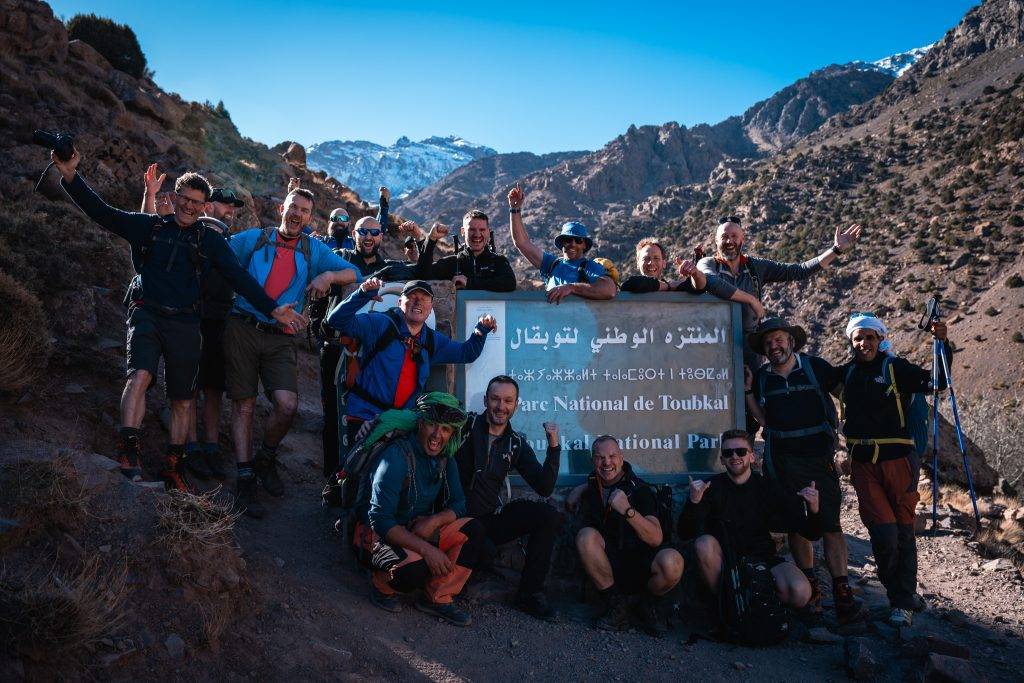
Sitting on the plane bound for Mount Toubkal in Morocco, I was excited and, to be perfectly honest, a little bit apprehensive about what lay ahead. The initiate phase and planning phase of our ‘project’ was now complete, and the execution phase was about to begin!
Our sixteen-strong group arrived in Marrakesh on Saturday 25th February. The flight had not been without incident as one of our number had taken sick on the journey and had to be assessed by a medical team on arrival in Morocco. He was deemed fit, but unfortunately, he had to make the rather difficult decision to forego the climb and return home. The risk of ascending the mountain at less than 100% fitness, considering the unknown quantity of altitude sickness, introduced far too high a risk factor, both for our friend and for the rest of us.
We took a coach from the airport to the lodge where we would be staying the first night before setting out on the four-day hike to Toubkal and back. Sam, our expedition leader from Monkey Mountaineering had insisted on a four-day trek to safely acclimatise and ascend Toubkal as he would take no risks against the climber’s chief adversary, altitude sickness. Other clients have been known to put pressure on him to complete the trek in 3, sometimes 2 days, to get back to the office on Monday morning, but Sam won’t hear of it. Our bodies needed to adjust to the higher altitudes gradually to minimise the risk of altitude sickness and if someone had succumbed, there would be no air ambulance rescue service or indeed places for such a service to land on the mountain.
I understand Sam’s approach, as the best project managers wouldn’t allow an unsafe element of risk into a project either. Funny how, sometimes, clients apply pressure to get a project completed more quickly, but that almost always introduces an element of risk and quality is often the casualty. When a project manager sticks to their guns, however, a project might cost a little more or take a little longer to complete, but the risks can be eliminated and quality can be assured. So, I, for one, was grateful that Sam saw things in the same way as the very best project managers would.
Four days to reach the summit.
The first day of the trek would take us from the lodge in the village of Imlil to the Toubkal refuge, 1300 m of elevation. We were met by Ibrahim, Abdullah and Mohammed, our excellent local guides in the morning and we arrived at the refuge (3207 m above sea level) at the end of the first day. Our guides all spoke English and they told us that they did two to three trips a week and worked forty weeks every year. The plan was to spend three nights at the refuge with them to acclimatise to the altitude and we would be allowed to scale the lesser peaks of Ras and Timzguida as part of the acclimatisation process. Other members of the local team helped out with the food prep, portering and loading our excess baggage onto the backs of mules! At the lodge, we were also given our crampons and ice axes and shown how to use them.
On the second day, we were given a pre-briefing to help us guard against altitude sickness and being honest about how we were feeling to manage it. Our goal for the day was to reach the “col”, a ridge above the refuge. We would have to ascend another 500 m of altitude to 3700 m to become sufficiently acclimatised. We also had the the option of scaling the two lesser peaks of Ras and Timzguida, if we so wished. Both peaks are over 4000 m.
Above the col, four of us were happy with the oxygen levels and decided to save our energy for the next day’s climb to Mount Toubkal, which was, after all, the reason we had come to the Atlas Mountains. While the rest of the group continued up, we four found a flatter area out of the wind and went to sleep for an hour! What a sweet sleep it was too!
On the third day, we were up early at 6 am and we left in the dark at 7 am, wearing head torches, ready for the ascent of Toubkal. Everyone was feeling quite well rested and the skies were clear with plenty of sun and a little wind. We had 1000 m ahead of us to ascend, so we took slow steps with plenty of breaks in which we tried not to get too cold. Helping each other along, we reached the summit of Mount Toubkal at midday. There were no other climbers at the summit and peace reigned supreme. To say that the views were breathtaking is an understatement. We spent a whole hour at the summit just looking down at the sheer beauty of it all with the two professional photographers in our party taking some amazing photos of the incredible views. It felt great that we had all made it from the refuge to the summit together.
We started to descend early in the afternoon and stopped for lunch in the middle of nowhere. Tasty Moroccan food was spread out like a picture – a picnic for us to enjoy following our exertions. Somehow, coming down was a lot less time-consuming and within a few hours we found ourselves at the refuge for our last night on the mountain.
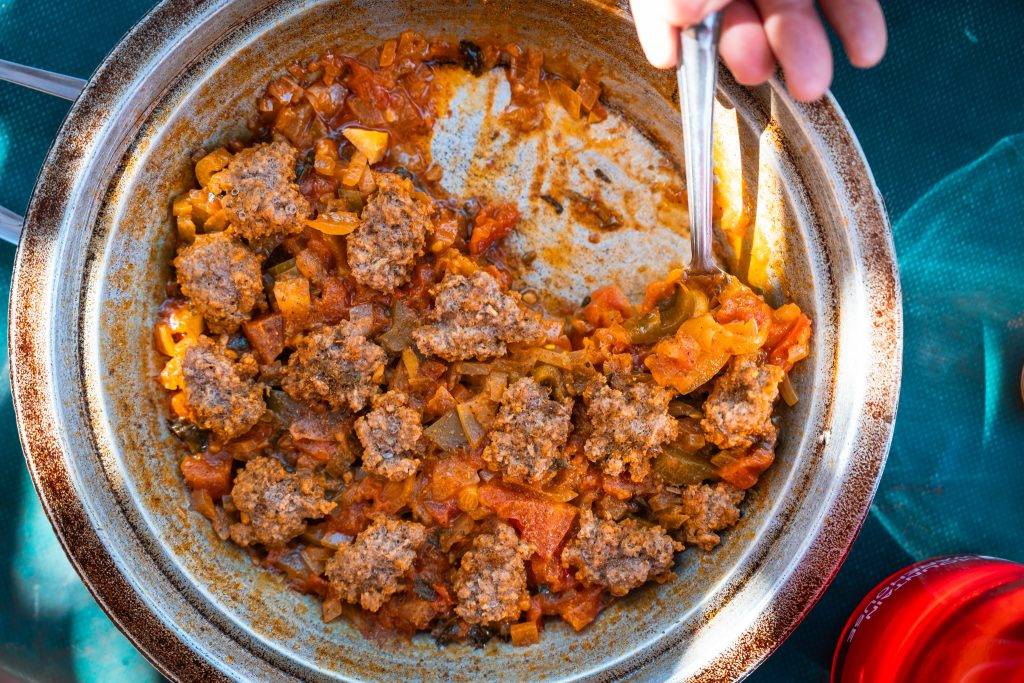
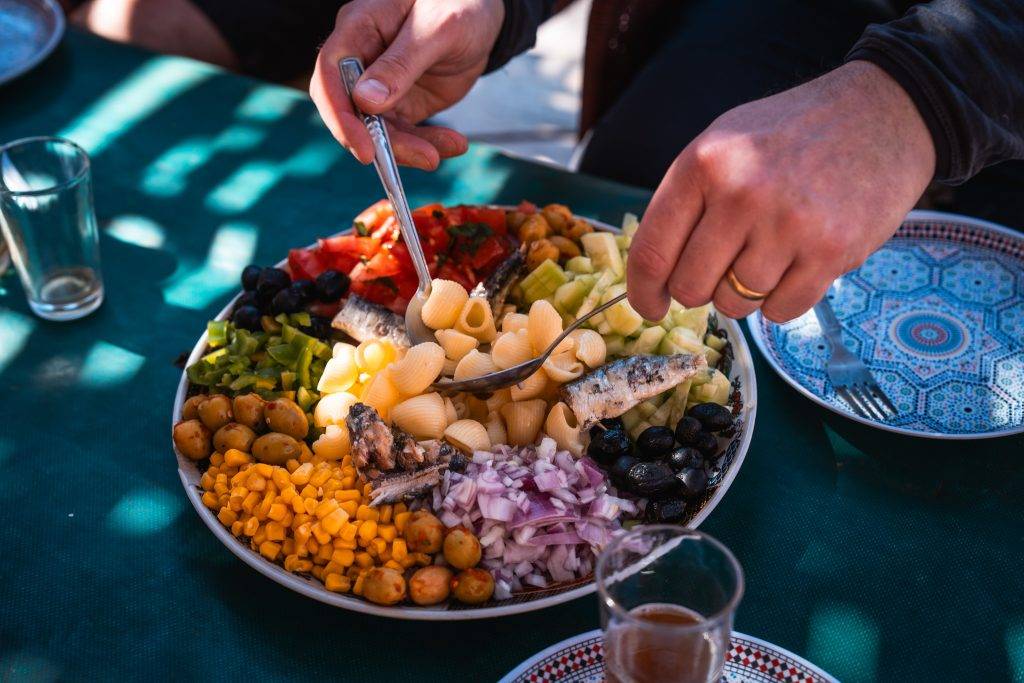
Day 4 was our return from the refuge to the village of Imlil. Then almost before we knew it, we were back in Marrakesh for a celebration dinner. The sights, sounds and smells of the streets and their markets were all quite overwhelming in comparison with the serenity of the mountaintop. The temperature change was pretty startling too! We stayed at the Riad Africa Hotel and on Thursday we spent a full day taking in the sites and the hustle and bustle of the busy streets. Then, on the final night, we went for an authentic Moroccan meal with Moroccan music and belly dancers! Although it was all very entertaining, part of me missed the stillness and perfection of the mountain.
On our return flight, I reflected on what had been an extremely well-delivered project by Monkey Mountaineering. ‘Closing out’ the project in my head I considered how each phase had been so successful, if challenging and fraught with obstacles. The project was initiated properly, a lot of the good training had taken place during the planning phase and the execution was seamless, albeit some people did drop out and some honest conversations were necessary.
Another positive takeaway from this highly successful trip, apart from meeting Sam, one of the best project managers I’ve met, was that we were able to contribute to the economy of an area which had been stricken by severe flooding in recent times and the terrible earthquake of last year. Tourism is very important to the local economy, and the mountain itself represents a precious source of income – pay and tips – for the guides and their helpers. I know that our visit will make a difference to the local team and their families and it felt right to be able to thank them for all the good that the trip had done for us.
Some useful links:
